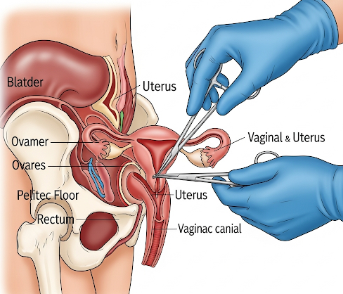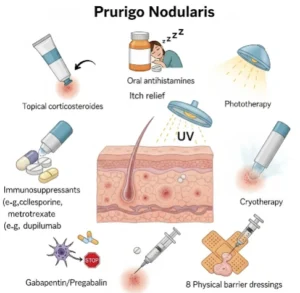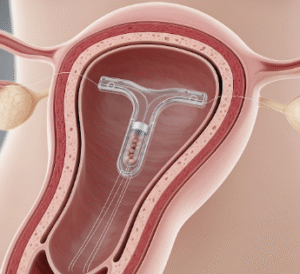Overview
A vaginal hysterectomy is a surgical procedure in which the uterus is removed through the vagina, without requiring any abdominal incision. It is one of the most common gynecological surgeries worldwide, and is particularly beneficial for women with uterine prolapse, fibroids, chronic pelvic pain, or abnormal bleeding. Unlike abdominal or laparoscopic hysterectomy, the vaginal approach reduces postoperative pain, shortens hospital stays, and accelerates recovery.
In South Korea, vaginal hysterectomy is performed at world-class hospitals with state-of-the-art surgical equipment, experienced gynecologists, and multidisciplinary teams. Korea is renowned for combining minimally invasive techniques with comprehensive postoperative care, offering international patients high-quality treatment, shorter recovery times, and excellent safety outcomes.
Women often choose vaginal hysterectomy when:
- ➤ They have uterine prolapse that affects bladder or bowel function
- ➤ They experience abnormal or heavy menstrual bleeding that is unresponsive to medical treatment
- ➤ They have benign fibroids or adenomyosis causing chronic pain
- ➤ There are precancerous uterine conditions requiring removal of the uterus
- ➤ They want a minimally invasive option with faster recovery
What is Vaginal Hysterectomy?
A vaginal hysterectomy is a procedure in which the uterus is surgically removed through the vaginal canal, eliminating the need for external incisions. In some cases, the ovaries and fallopian tubes may also be removed, depending on the patient’s condition and risk factors.
Key indications include:
- ➤ Uterine prolapse: When the uterus descends into or outside of the vaginal canal, causing discomfort, urinary symptoms, or sexual dysfunction
- ➤ Uterine fibroids: Benign tumors causing pelvic pain, heavy bleeding, or pressure symptoms
- ➤ Endometriosis or adenomyosis: Chronic pelvic pain and heavy menstrual cycles
- ➤ Precancerous or malignant conditions: Abnormal uterine bleeding or endometrial hyperplasia
Advantages over other hysterectomy methods:
- ➤ No abdominal incision – leaves no visible scar and reduces the risk of infection
- ➤ Shorter surgery duration and hospital stay – usually 1–2 days in Korea
- ➤ Faster recovery – most women resume normal activities in 4–6 weeks
- ➤ Lower postoperative pain – avoids abdominal muscle cutting
- ➤ Better cosmetic results – no external scarring
South Korea specializes in enhanced recovery after surgery (ERAS) programs, combining minimally invasive techniques, pain management protocols, and early mobilization for optimal outcomes.
What are the Benefits?
The benefits of vaginal hysterectomy are extensive:
✔ Minimally invasive procedure – no abdominal incision, less pain, reduced risk of wound complications
✔ Rapid recovery – most patients are discharged within 24–48 hours
✔ Symptom relief – resolves bleeding, pain, prolapse, and urinary or bowel pressure
✔ Low risk of complications – advanced Korean surgical techniques minimize bleeding and infection
✔ Improved pelvic support – particularly important for prolapse cases
✔ Enhanced fertility planning – for women undergoing partial hysterectomy for uterine preservation (if applicable)
✔ Short-term and long-term safety – international studies confirm vaginal hysterectomy as safe and effective
Procedure Details:
1) How should I prepare for Vaginal Hysterectomy?
Proper preparation is essential for a safe and successful vaginal hysterectomy.
- ● Preoperative evaluation:
- Comprehensive blood tests, urinalysis, and imaging such as pelvic ultrasound or MRI
- Pap smear to rule out cervical abnormalities
- Assessment of uterine size, prolapse degree, and ovarian health
- ● Medication adjustments:
- Blood thinners may need to be paused
- Certain chronic medications (diabetes, hypertension) may require dose modification
- ● Fasting:
- No food or drink for 6–8 hours before surgery
- ● Bowel preparation:
- Some surgeons recommend a light bowel prep to reduce intraoperative complications
- ● Lifestyle and health optimization:
- Stop smoking for at least 2–4 weeks before surgery
- Maintain a healthy weight and balanced diet
- Treat pre-existing infections, if any
- ● Hospital preparation in Korea:
- International patients receive multilingual instructions and patient-centered care
- Preoperative counseling sessions help reduce anxiety, especially for first-time surgery
2) What happens during the procedure Vaginal Hysterectomy?
The procedure is performed in operating rooms equipped with modern surgical technology.
- ➤ Anesthesia: General or regional anesthesia is administered
- ➤ Positioning: Patient placed in lithotomy position for vaginal access
- ➤ Surgical steps:
- Vaginal canal prepared and sterilized
- Incisions made in the vaginal wall to access the uterus
- Uterus detached from surrounding ligaments, blood vessels, and supporting structures
- Ovaries and fallopian tubes may be removed if indicated
- Uterus removed through the vaginal canal
- Vaginal cuff is sutured for healing
- ➤ Duration: 1–2 hours depending on uterine size, prolapse severity, or additional procedures
- ➤ Korean advantage: Surgeons utilize high-definition visualization, minimally invasive instruments, and enhanced surgical techniques to reduce complications
Additional procedures that may be performed:
- Repair of pelvic floor prolapse
- Bladder or urethral repair if prolapse affects urinary function
- Laparoscopic assistance for very large uterus or complicated anatomy
3) What happens after a Vaginal Hysterectomy?
- ● Hospital stay: Usually 1–2 days; some cases may discharge on the same day for uncomplicated procedures
- ● Pain management: Mild discomfort is managed with oral medications
- ● Activity: Early ambulation encouraged to prevent blood clots; heavy lifting avoided for 4–6 weeks
- ● Diet: Resume normal diet as tolerated; focus on fiber and hydration
- ● Follow-up care:
- Pelvic exam at 2–6 weeks
- Sutures dissolve naturally or are removed if non-absorbable
- Guidance on sexual activity resumption after complete healing
- ● Korean hospitals: Provide postoperative physiotherapy, counseling, and multilingual instructions for smooth recovery
Risks / Benefits
✔ Benefits:
- ✦ Effective treatment for uterine conditions causing bleeding, prolapse, or pain
- ✦ Minimally invasive with no visible scar
- ✦ Short hospital stay and faster recovery
- ✦ Can be combined with pelvic floor repair or ovarian surgery
- ✦ Safe for women of all ages under expert care
⚠ Possible Risks (rare):
- ➔ Infection or vaginal cuff healing complications
- ➔ Bleeding or hematoma formation
- ➔ Injury to bladder, ureters, or nearby organs
- ➔ Blood clots or deep vein thrombosis
- ➔ Anesthesia-related complications
- ➔ Rare recurrence of prolapse if repair not performed
Recovery and Outlook
- ➤ Immediate recovery: Patients monitored in hospital for 24–48 hours
- ➤ Pain and discomfort: Usually mild, managed with medication
- ➤ Activity: Avoid heavy lifting or strenuous exercise for 4–6 weeks
- ➤ Sexual activity: Typically resumed after complete healing (6–8 weeks)
- ➤ Long-term outlook: High success rate in relieving symptoms of prolapse, bleeding, and pain
- ➤ Korean advantage: Advanced surgical techniques, ERAS protocols, and multidisciplinary teams ensure minimal complications, rapid healing, and excellent patient satisfaction
When To Call the Doctor
Patients should contact their doctor immediately if they experience:
- ⚠ Heavy or persistent vaginal bleeding
- ⚠ Severe abdominal or pelvic pain
- ⚠ Fever, chills, or other infection signs
- ⚠ Difficulty urinating or persistent urinary symptoms
- ⚠ Unusual discharge or foul odor
Best Korea Option / Process
South Korea is recognized globally for vaginal hysterectomy procedures due to:
- 🌟 Highly skilled gynecologists trained in minimally invasive surgery
- 🌟 State-of-the-art surgical instruments and high-definition visualization
- 🌟 Short hospital stays with rapid recovery programs
- 🌟 Multilingual support and international patient services
- 🌟 Comprehensive postoperative care including pain management, physiotherapy, and counseling
Top Korean Hospitals for Vaginal Hysterectomy:
- ✅ Seoul National University Hospital (Gynecology Dept.)
- ✅ Asan Medical Center
- ✅ Samsung Medical Center
- ✅ Severance Hospital (Yonsei University)
- ✅ Bundang CHA Hospital (Advanced Gynecology Center)
✅ Quick Highlights Recap
- ➤ Minimally invasive removal of the uterus through the vaginal canal
- ➤ Treats uterine fibroids, prolapse, abnormal bleeding, or precancerous conditions
- ➤ Faster recovery, less pain, and no visible scars compared to abdominal hysterectomy
- ➤ Rare risks, mostly manageable under expert care
- ➤ Korean hospitals offer advanced techniques, highly skilled surgeons, and comprehensive patient support













